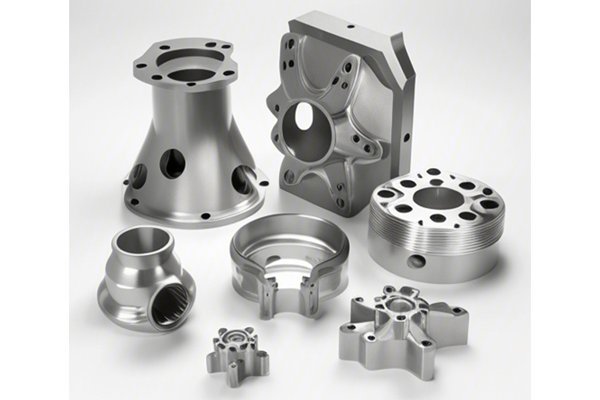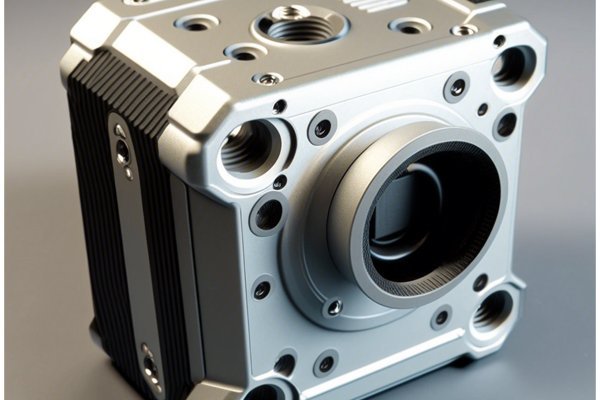Did you know that the aerospace industry has seen a remarkable shift towards the use of CNC (Computer Numerical Control) machining for component manufacturing? In fact, studies show that CNC machining can reduce production time by up to 80% compared to traditional manufacturing processes while maintaining a high level of accuracy and consistency. With the continual advancements in technology and materials, CNC machining has become a cornerstone of aerospace manufacturing, catering to the industry’s demand for precision and customization.
The Importance of CNC Machining in Aerospace
CNC machining is defined as a subtractive manufacturing process that uses computer-controlled machinery to remove material from a solid block, achieving the desired shape. Aerospace engineers and manufacturers have turned to CNC machining to meet challenging specifications, often under tight deadlines. The benefits of CNC machining in this sector go beyond speed; they include improved quality, reduced waste, enhanced safety features, and greater flexibility in design.
Quality and Precision
One of the most crucial aspects of aerospace components is precision. Aircraft components undergo rigorous testing, and deviations can lead to catastrophic results. CNC machining offers unparalleled accuracy, with tolerances as tight as 0.001 inches. This ensures that each component fits perfectly with others, maintaining structural integrity and safety. The process allows for the creation of complex geometries that would be challenging and costly to produce using traditional machining methods.
Advantages of CNC Machining in Aerospace
CNC machines can swiftly adapt to different designs, making it easier for manufacturers to create bespoke components tailored to specific aircraft or missions. This customization aspect is essential in aerospace, where unique requirements are the norm. From intricate brackets to complex engine components, CNC machining can handle diverse materials, including lightweight alloys and titanium, often used in aerospace applications.
The fast turnaround times that CNC machining offers are crucial in an industry driven by rapid innovation and strict timelines. With the ability to automate processes, engineers can prototype and iterate designs with minimal delays, resulting in a more efficient manufacturing pipeline. This rapid prototyping capability is particularly advantageous for developing new aircraft models or modifying existing designs to enhance performance.
While the initial investment in CNC machinery may be high, the long-term cost savings associated with reduced labor, lower material waste, and quicker production times make it a financially wise choice. Also, the enhanced consistency and quality of the products minimize the chances of costly rework and scrap.
Understanding the CNC Machining Process in Aerospace
Design and Engineering
The process begins with comprehensive design and engineering. Engineers utilize CAD (Computer-Aided Design) software to create models of aerospace components. These designs are then converted into a language that CNC machines can understand through CAM (Computer-Aided Manufacturing) software, generating toolpaths that dictate how material will be removed.
Material Selection
Material selection is vital in aerospace. Components must withstand harsh conditions, including extreme temperatures and pressures. Common materials in CNC aerospace machining include aluminum, titanium, and steel alloys. Each material has its unique properties that can significantly influence the finished product’s performance.
Setup and Machining
Once the materials are prepared, the CNC machine is set up. This involves securing the material on the machining table, loading the appropriate tools, and inputting the CAM-generated instructions. The precision and control of CNC machines result in intricate milling, drilling, and turning operations that define the final shape of the component.
Quality Control
Quality assurance is an ongoing aspect of aerospace manufacturing. Components are frequently inspected throughout production utilizing advanced measuring technologies, such as CMM (Coordinate Measuring Machines), to ensure they meet specified tolerances and specifications. This quality control step helps to maintain the high safety standards required in the aerospace industry.

Challenges and Solutions in CNC Machining for Aerospace
The inherent complexity of aerospace components can pose challenges during the CNC machining process. However, modern CAD/CAM technologies have made it possible to handle intricate designs more effectively. Investing in advanced CNC machines equipped with multi-axis capabilities allows manufacturers to create components with greater geometric complexity.
Solution: Continuous training for machinists in the latest software and technology advances can ensure they can leverage these capabilities to the fullest.
Different materials respond uniquely to machining processes. Titanium, for example, is a high-strength material that can generate significant heat during machining, potentially leading to tool wear or component deformation.
Solution: Utilizing specialized tools and using proper coolant systems can mitigate these issues. Understanding the properties of materials helps machinists adjust their practices accordingly.
Aerospace parts must adhere to strict regulatory standards set forth by organizations such as the Federal Aviation Administration (FAA) and the European Union Aviation Safety Agency (EASA). Compliance is not just a checklist; it’s essential for ensuring safety and reliability.
Solution: Integrated quality management systems can assist manufacturers in maintaining compliance while ensuring quality and performance throughout the manufacturing process.
The Future of CNC Machining in Aerospace
As technology continues to evolve, the future of CNC machining in aerospace looks promising. Innovations such as additive manufacturing (3D printing) and AI integration in CAD/CAM systems are set to revolutionize the landscape. These advancements will enable even more complex designs, greater customization, and enhanced efficiencies, further solidifying CNC machining’s role in aerospace manufacturing.
CNC machining has transformed the landscape of aerospace manufacturing, driving innovation while ensuring quality, precision, and customization. By embracing advanced technologies and techniques, manufacturers can meet the increasing demands of the aerospace sector, creating components that are not only efficient but safe.
As we have explored throughout this blog, CNC machining offers numerous benefits—from customization and reduced lead times to cost-effectiveness and enhanced design capabilities. While challenges exist, the ongoing evolution of technology presents solutions that will continue to enhance the capabilities of CNC machining in aerospace.
For industry professionals and enthusiasts alike, understanding the intricacies of CNC machining and its applications in the aerospace sector is essential. It allows stakeholders to appreciate the technological advancements that contribute to safer, more efficient air travel while recognizing the importance of an innovative approach to manufacturing.
As you ponder the future of aerospace and the significant role of CNC machining, remember that the foundations laid today will shape the industry for years to come. Consider how you can apply the principles of precision engineering and innovation in your endeavors—whether in manufacturing, engineering, or beyond. The importance of CNC machining for customized aerospace metal components is undeniable, and its future is bright.






